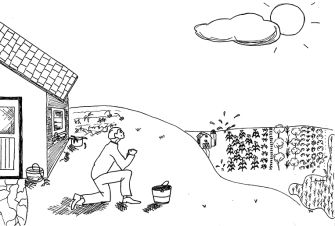We’ve taken shorter showers, fixed our leaky faucets, and let our lawns go dry. Some restaurants only serve water upon request in an effort to save a few precious gallons of it. It’s clear this drought isn’t going away anytime soon.
California has been in a drought for four years now. Though occasional rainstorms sometimes bring hope of a respite from the dry weather, it seems like we might be in it for the long haul.
Governor Jerry Brown recently unveiled an executive order aimed at conserving the Golden State’s most precious resource. New regulations mainly target urban areas in an effort to limit water consumption by 25 percent during the next nine months.
The executive order imposes limitations on water usage for car washes, public landscaping, golf courses, and more. And it’s going to be strict—Mark Cowin, the director of the California Department of Water Resources, said the state would tightly monitor compliance, and penalize those who do not observe the rules.
While water conservation efforts are great, it seems like the state has their priorities mixed up. The water usage of individuals is a mere drop in the bucket compared to the amount used for California agriculture.

Agriculture, much of it for farms in the Central Valley, uses 80 percent of the state’s developed water supply, according to the California Environmental Protection Agency’s Air Water Board.
Despite this knowledge, Governor Brown has said he will not force farmers to cut back on their water usage. While it’s important to support agriculture, which is a big business in California, the way our state currently allocates water is not sustainable in the long run.
California farmers are responsible for the production of a variety of products, from almonds to cotton to grapes to rice. The problem is that many of these crops use massive amounts of water, yet they are grown in the desertlike climate of the Central Valley.
For example, California produces 100 percent of the United States’ supply of almonds, according to the Almond Board of California. Unfortunately, almonds use a tremendous amount of water.
A mature almond tree will suck up 41 to 44 inches of water in a year, according to the University of California, Davis. All told, almond production uses roughly 8 percent of California’s water supply, according to the California Department of Water Resources.
Almonds are delicious and healthy—but they’re not worth wasting our water.
If the effects of California’s drought are ever to be mitigated, the state should focus on finding ways to cut back on the water used for agriculture. This could mean developing new technologies that make farming easier, or relying on other countries for some of the foods that we currently grow. Maybe it means cutting back on our almond consumption.
Though it may be expensive and daunting, fundamental changes to California agriculture are imperative for the future of our water.
Governor Brown’s executive order might be just the tip of the iceberg. And, at some point, conserving water will become a hardship for California households. Will we allow ourselves to be sucked dry while farms remain relatively unscathed?
Sacramento will soon need to address whether they will impose restrictions on agricultural water use. Legislators are faced with a decision: preserve the tradition of California farming, or give water to their constituents.
If this drought is going to last for another few years, a long-term solution is in order. It might be difficult in the short run, but a change to California’s agricultural mindset is the only way to truly aid our ailing water supply.






